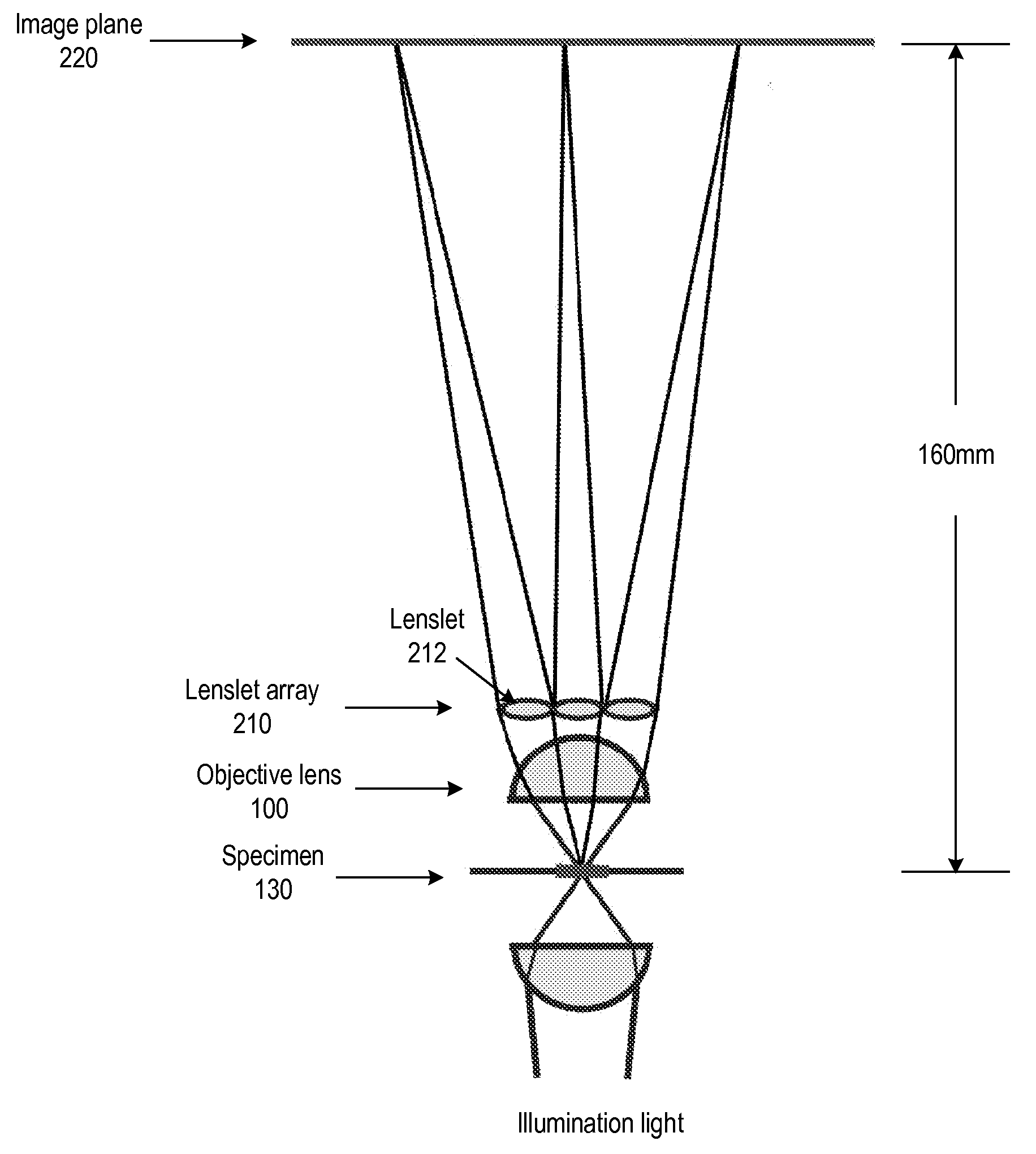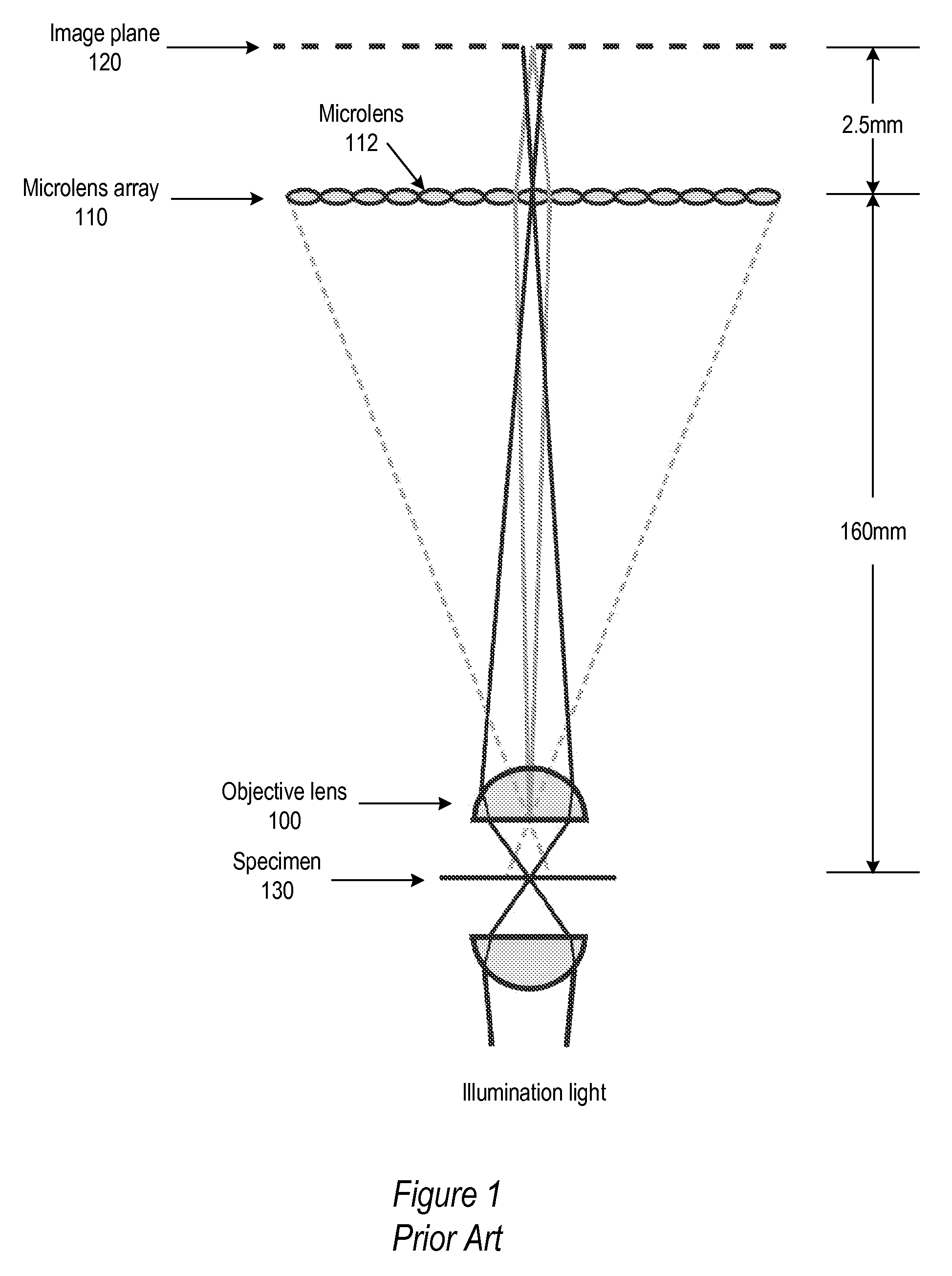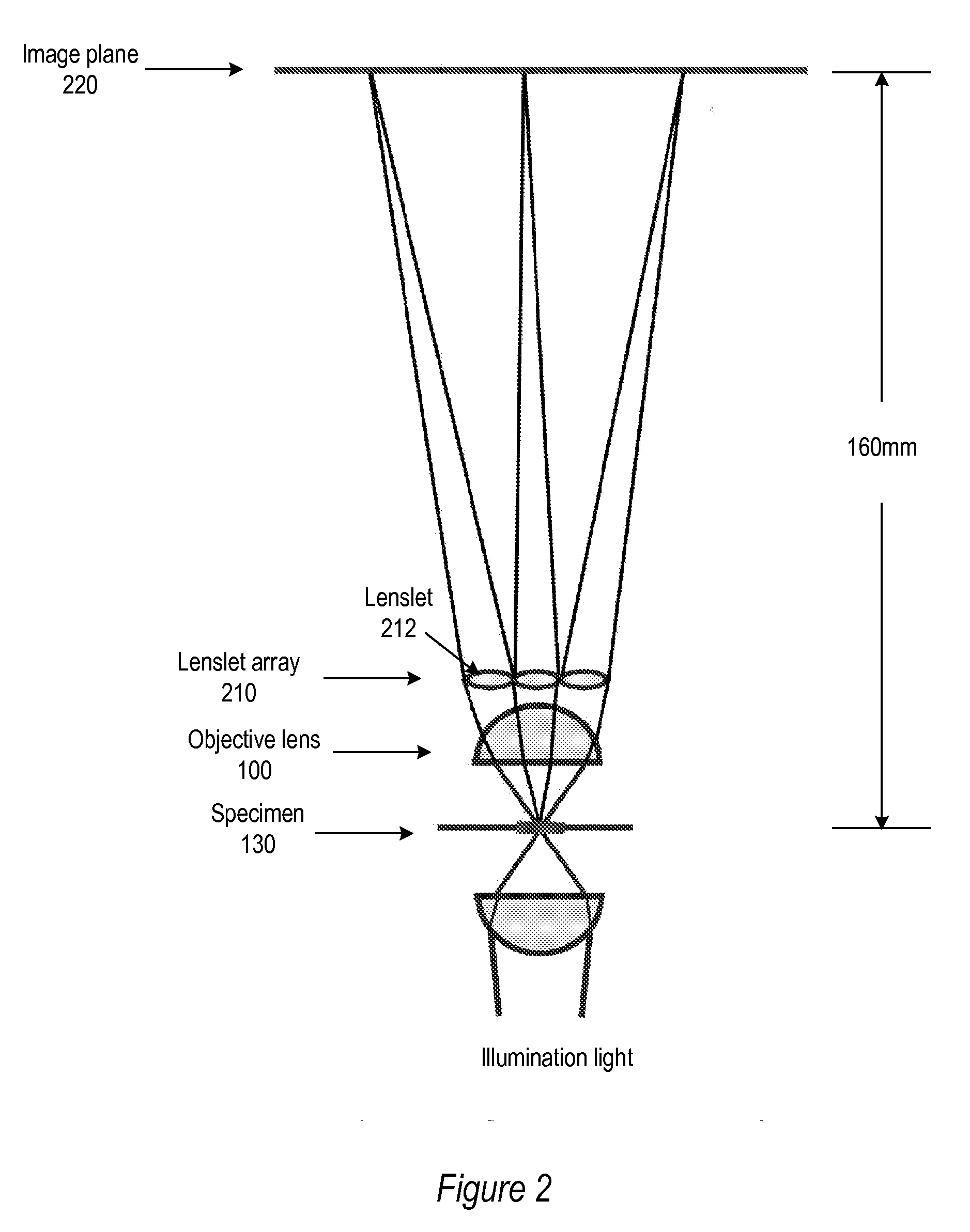Light Field Microscope With Lenslet Array
a technology of light field microscope and lenslet array, which is applied in the field of three-dimensional light field microscope, can solve the problems of inconvenient operation, additional mechanical parts add considerable complexity to the microscope and operation, and the robust way is extremely difficult, so as to avoid mechanical complications, reduce the loss of pixels, and improve the effect of quality
- Summary
- Abstract
- Description
- Claims
- Application Information
AI Technical Summary
Benefits of technology
Problems solved by technology
Method used
Image
Examples
Embodiment Construction
[0028]Various embodiments of a method and apparatus for a light field microscope that may be used for real time three-dimensional (3D) microscopy and that incorporates a lenslet array at or near the rear aperture of an objective lens are described. A microscope objective lens is of very strong power (and thus of small focal length), especially at high magnification. Quality microscope objective lenses are highly optimized, corrected for chromatic and other aberrations, planar and strongly specialized in different ways. The objective lens is the single most expensive component in a conventional microscope. Replacing the objective lens with an uncorrected array of lenslets may not be feasible. Thus, embodiments supplement the objective lens with an array of low power lenslets which may be located at or near the rear aperture of the objective lens, and which slightly modify the objective lens. The result is a new type of objective lens, or an addition to existing objective lenses. Embo...
PUM
 Login to View More
Login to View More Abstract
Description
Claims
Application Information
 Login to View More
Login to View More - R&D
- Intellectual Property
- Life Sciences
- Materials
- Tech Scout
- Unparalleled Data Quality
- Higher Quality Content
- 60% Fewer Hallucinations
Browse by: Latest US Patents, China's latest patents, Technical Efficacy Thesaurus, Application Domain, Technology Topic, Popular Technical Reports.
© 2025 PatSnap. All rights reserved.Legal|Privacy policy|Modern Slavery Act Transparency Statement|Sitemap|About US| Contact US: help@patsnap.com



